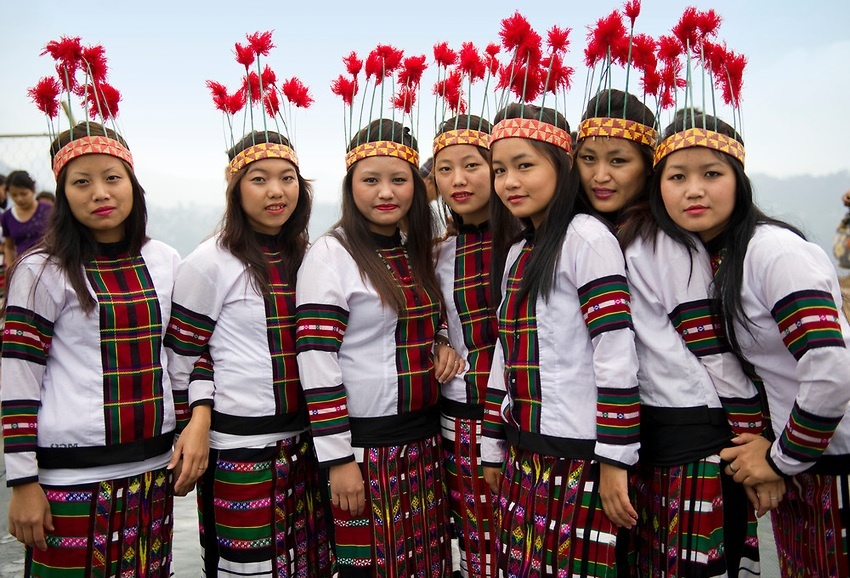Indian Tribal Community

India has the largest concentration of tribal population anywhere in the world except perhaps in Africa.
They occupy around 15 % of the total geographical area of the country, usually in difficult and inhospitable terrain in the hills and valleys. The scheduled tribes in India are broadly composed of 250 tribal groups speaking about 105 languages and 225 dialects. The scheduled tribes in India have been specified, as per provisions contained in Article 342 of the Constitutions of India, in 30 States/Union Territories. Tribal generally inhabit the forest and hills areas and they are the worst among the exploited sections of the society.
The largest number of tribal-around 12 million- 38 reside in Madhya Pradesh, which is about 20.3 percent of the country’s total tribal population. Tribal communities live in about 15 percent of the country’s areas, in various ecological and geo-climatic conditions ranging from plains and forests to hills and inaccessible areas. Tribal groups are at different stages of social, economic and educational development.
While some tribal communities have adopted a mainstream way of life, at the other end of the spectrum, there are certain Scheduled Tribes, 75 in number, known as Particularly Vulnerable Tribal Groups. (Page 24, Ministry of Tribal Affairs, Annual Report, 2008-09. The census 2001 has identified 578 tribes in India. In 1950 the number of the Scheduled Tribes was 212. Since 1891, variation in the tribal population was observed as they were counted under different names and heads. In 1891, the number of these tribal was estimated to be nearly 1.6 crores. In 1931, the number of the tribals of India and Burma was a little over 2.46 crores.
After Partition, the tribal population as determined by the Constitutional (Determination of Population) Order, 1950 was 00.83 crores. In the 1951 census, their number rose to 1.91 crores which was 5.36 percent of the country’s total population. The 1951 Census after following a policy to discourage community distinction based on caste stopped recording name of the tribes and tribal was enumerated as whether he belonged to Scheduled Tribe group in general.
The social life of the tribal involves methods of grouping and grading people for the effective conduct of and sharing in common activities. They have their own structure and organisation. Their relations are direct and intimate as they form a small community in a particular territory. The tribes of North-eastern Himalayan region are known by a few generic names. The other groups of the tribes known by a common name are the Gonds, Bhils and Gadabas of middle and western India.

The social class and hierarchy are common in middle and western and central Himalayas regions. So is the case in middle and western India. The lineage grouping is however more common in middle India. Tribes like Khasi and Garo of Meghalaya and the Kedar, Kanikkar and Manrian living in Kerala and the borders of Tamilnadu, and the original inhabitants of Lakshadweep practice matrilineal system. The custom of polyandry is seen in the Himalayan region except in the north-eastern part i.e. from Ladakh in Jammu and Kashmir in the North-West running through ‘Lahaut’ and Spiti, Kangra, Chamba, Kullu, Mandi in Himachal Pradesh, Chakarata in Uttar Pradesh and Siang district in Arunachal Pradesh. The other area of Polyandry is in the Niligiri Hills of Tamilnadu.
Tribal societies are particularly present in the Indian states of Orissa, Madhya Pradesh, Chhattisgarh, Rajasthan, Gujarat, Maharashtra, Andhra Pradesh, Kerala, Karnataka, Tamilnadu, Bihar, Jharkhand, West Bengal, northeastern states, and the Andaman and Nicobar Islands.
A tribal society is essentially a self-contained system. While it may possess sophisticated cultural and social structures, its technological and economic structures are generally primitive. Consequently, by the late 20th century such societies had become increasingly rare, and many tribal dances had either died or become transformed.
Tribal communities live, in various ecological and geo-climatic conditions ranging from plains and forests to hills and inaccessible areas. Tribal groups are at different stages of social, economic and educational development. While some tribal communities have adopted a mainstream way of life, at the other end of the spectrum, there are certain Scheduled Tribes, 75 in number known as Particularly Vulnerable Tribal Groups (PVTGs), who are characterized by:
- a) pre-agriculture level of technology;
- b) stagnant or declining population;
- c) extremely low literacy; and
- d) subsistence level of economy.
